Explore the diverse and flavorful world of Asian noodle dishes, where each bowl tells its own unique story. From the bustling streets of Bangkok to the quiet corners of a Japanese inn, these 25 noodle dishes offer a taste of tradition, innovation, and culinary artistry. Whether you’re in search of a spicy kick or a comforting broth, there’s a noodle for every palate.
Ramen
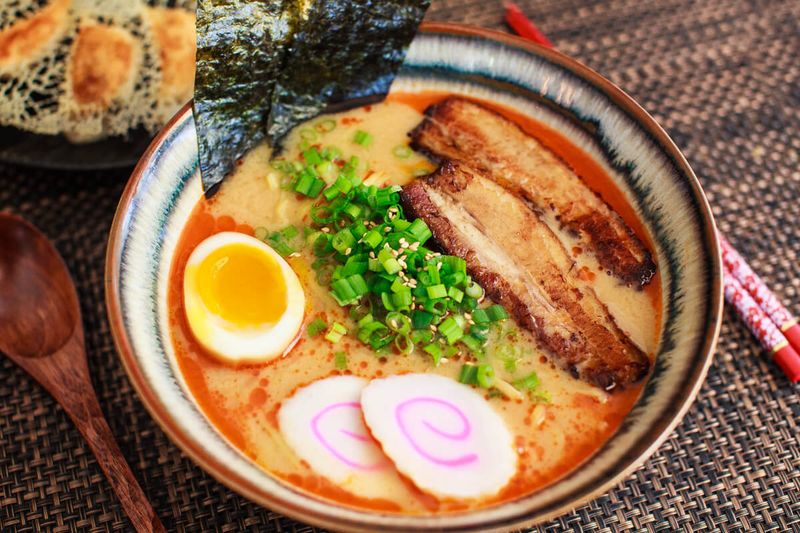
Ramen, a beloved dish in Japan, is known for its rich and savory broth, often flavored with miso or soy sauce. Each bowl is a symphony of flavors, with tender noodles and an array of toppings such as chashu pork, soft-boiled eggs, and nori. Ramen shops in Japan are a cultural staple, where chefs pride themselves on their unique recipes. With regional variations, from the creamy tonkotsu of Hakata to the spicy miso of Hokkaido, ramen is a culinary journey in each spoonful. It’s more than just a meal; it’s an experience.
Pho
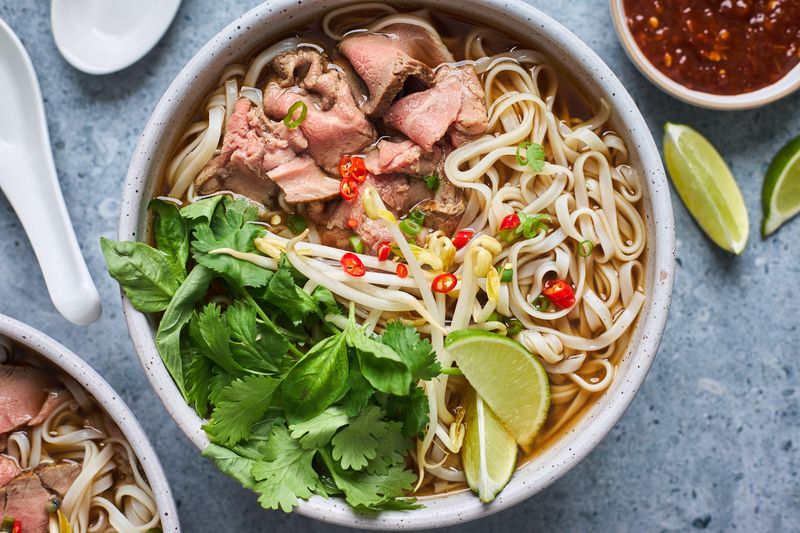
Pho, Vietnam’s iconic noodle soup, combines fragrant broth with fresh herbs and rice noodles. Traditionally served with beef or chicken, pho’s essence lies in its aromatic spices and slow-cooked broth. Street vendors in Vietnam have perfected this dish, offering it at all hours. Each bowl is a balance of flavors: the freshness of basil, the kick of lime, and the savory depth of the broth. Enjoyed as breakfast or dinner, pho has become a symbol of Vietnamese culinary identity, cherished by locals and travelers alike.
Pad Thai
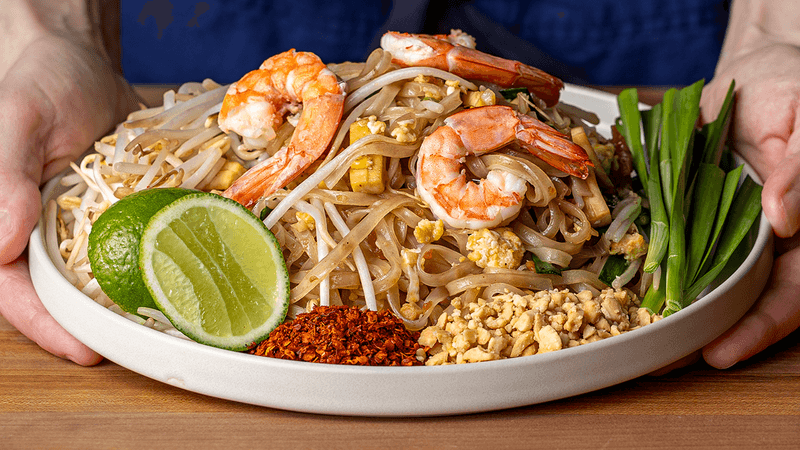
Pad Thai is a quintessential Thai street food, celebrated for its sweet and tangy flavors. Stir-fried rice noodles are tossed with shrimp or chicken, eggs, and tofu, creating a delightful harmony of tastes. The dish is often garnished with crushed peanuts, bean sprouts, and lime, adding texture and brightness. Originating during World War II, Pad Thai was introduced as a nationalistic effort to promote Thai identity. Today, it remains a global favorite, embodying the vibrant culinary spirit of Thailand in every bite.
Laksa
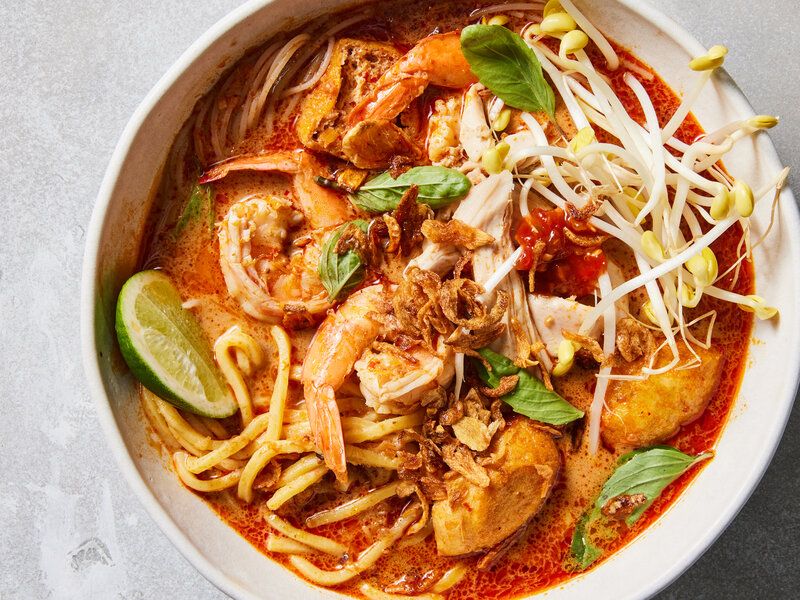
Laksa, a spicy noodle soup from Malaysia, is a fusion of Chinese and Malay flavors. Its broth, enriched with coconut milk and spices, creates a creamy base for rice noodles. Commonly topped with shrimp or chicken, tofu, and bean sprouts, laksa offers a rich tapestry of tastes. The dish reflects Malaysia’s multicultural history, where each region boasts its own version. From the sour asam laksa of Penang to the creamy curry laksa of Kuala Lumpur, this dish is a testament to Malaysia’s diverse culinary landscape.
Udon
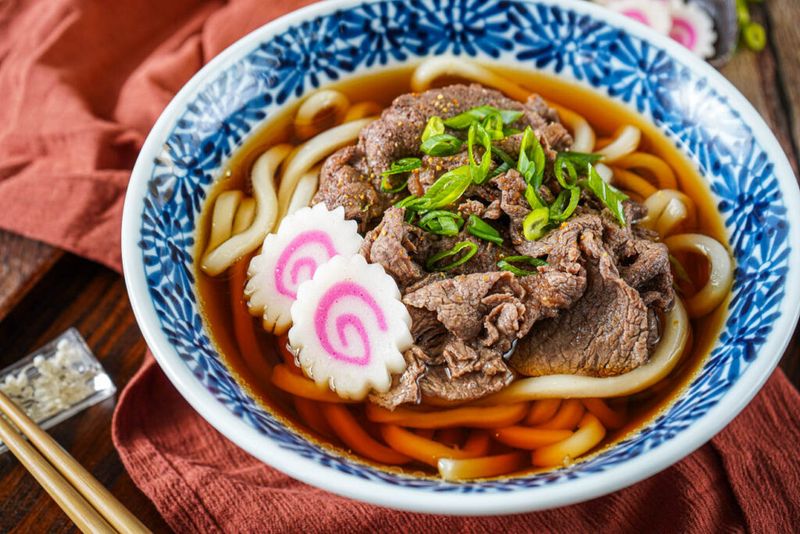
Udon, with its thick and chewy noodles, is a Japanese favorite known for its simplicity and comfort. Often served in a light broth with toppings like tempura, scallions, and kamaboko, udon is versatile and satisfying. The dish’s origins trace back to the Nara period, showcasing centuries of culinary evolution. Regional varieties abound, from the hearty curry udon to the chilled zaru udon, offering something for every taste. In Japan, udon is more than just nourishment; it’s a soothing embrace on a cold day.
Bun Cha
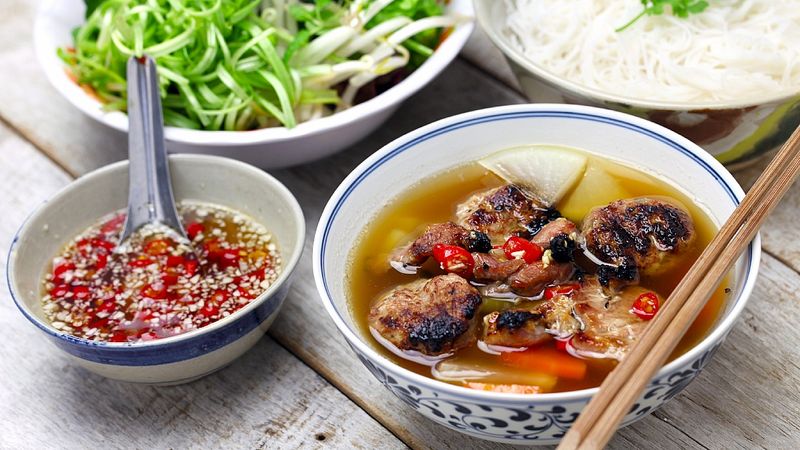
Bun Cha is a Vietnamese dish that captures the essence of Hanoi’s vibrant street food scene. It features grilled pork patties and slices of pork belly, served with vermicelli noodles and fresh herbs. The dish is accompanied by a tangy dipping sauce, creating a perfect balance of flavors. Bun Cha gained international fame when it was enjoyed by President Obama during his visit to Vietnam. Its simplicity and freshness make it a favorite among locals and tourists, a true culinary gem in Vietnam’s rich food culture.
Bibim Naengmyeon
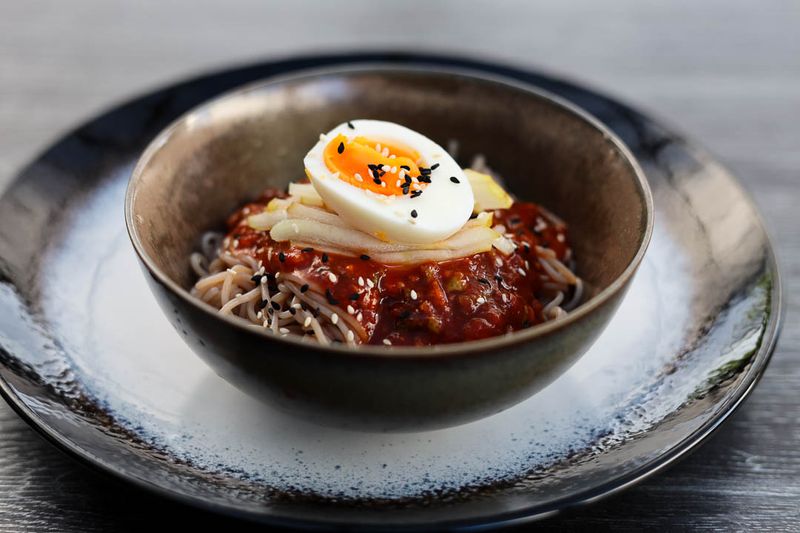
Bibim Naengmyeon, a Korean cold noodle dish, is perfect for hot summer days. Made with chewy buckwheat noodles, it features a spicy, tangy sauce that invigorates the senses. The dish is garnished with cucumber, pear, and boiled egg, offering a delightful contrast of flavors and textures. Originating from North Korea, Bibim Naengmyeon has become popular across the peninsula, celebrated for its refreshing qualities. This dish embodies the art of balance in Korean cuisine, where harmony of taste and presentation is paramount.
Char Kway Teow
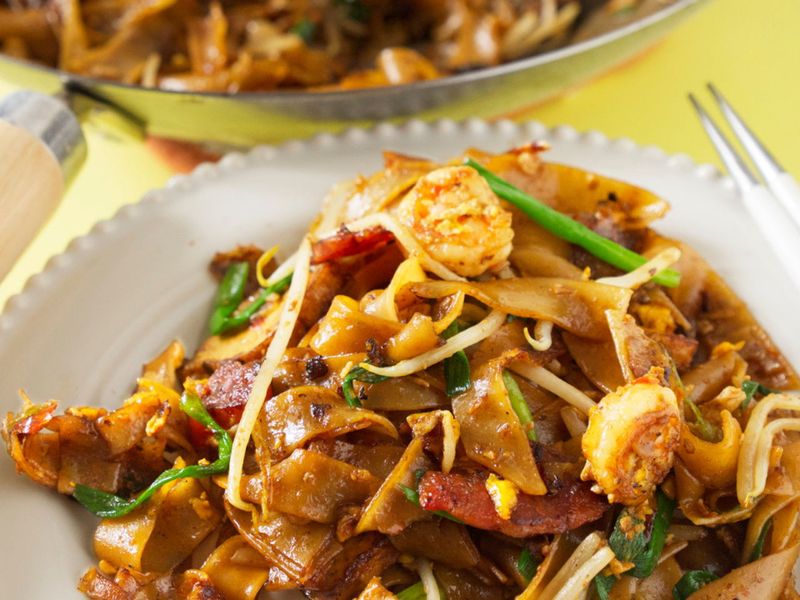
Char Kway Teow, a staple of Malaysian street food, is known for its smoky aroma and rich flavors. Stir-fried flat rice noodles are tossed with prawns, Chinese sausage, and bean sprouts, creating a savory delight. The dish’s signature “wok hei,” or breath of the wok, imparts a unique taste that can’t be replicated. With roots in Chinese immigrant communities, Char Kway Teow reflects Malaysia’s cultural melting pot. Each bite offers a taste of history and tradition, making it a cherished favorite among locals.
Soba
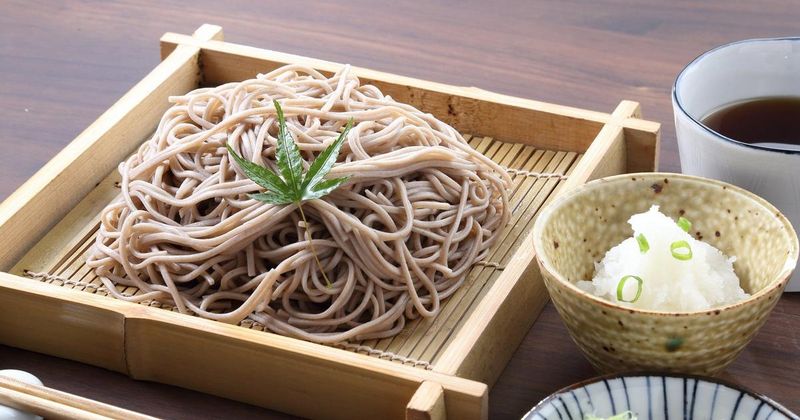
Soba noodles, made from buckwheat, are a cherished part of Japanese cuisine. These thin, earthy noodles are enjoyed both hot and cold, often served with a flavorful dipping sauce. Soba is celebrated for its health benefits and versatility, featuring in dishes from simple zaru soba to hearty soba soups. The artistry of soba-making, a revered skill in Japan, emphasizes precision and tradition. Each serving offers a taste of Japanese heritage, connecting diners to the land and its ancient culinary practices.
Chow Mein
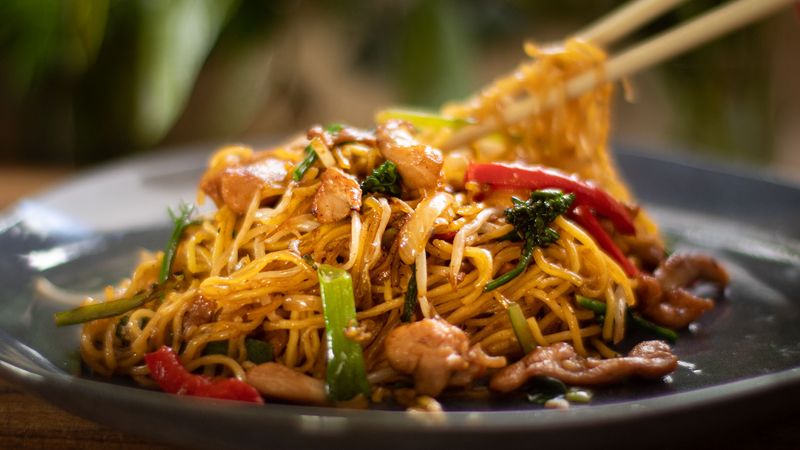
Chow Mein, a classic Chinese dish, combines crispy fried noodles with vegetables and protein, such as chicken or beef. The dish’s name means “stir-fried noodles,” and it’s a staple in Chinese-American cuisine. Each bite offers a medley of textures, with crunchy noodles and tender vegetables. Originating from Northern China, chow mein has evolved with regional variations across the globe. Its adaptability and flavor make it a beloved choice for both quick meals and festive occasions, celebrating the communal spirit of Chinese dining.
Mee Goreng
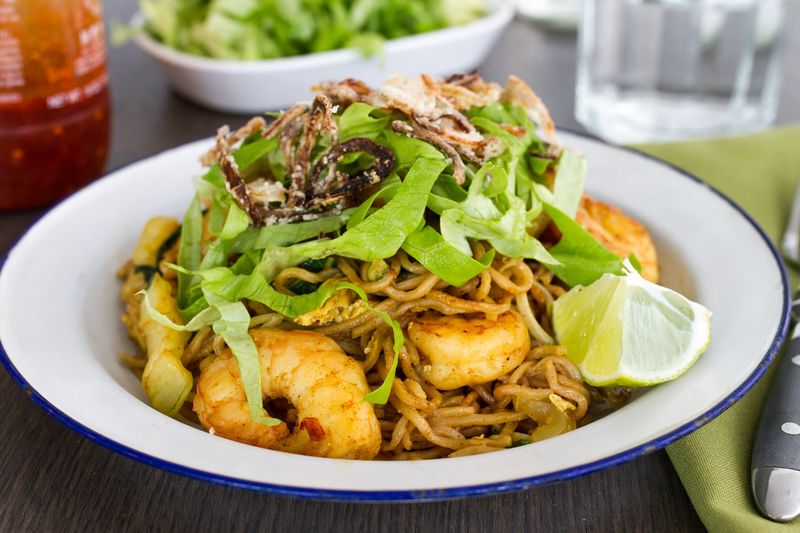
Mee Goreng, an Indonesian favorite, translates to “fried noodles” and is a vibrant dish bursting with flavor. Stir-fried yellow noodles are combined with shrimp, vegetables, and a fried egg, all seasoned with a sweet and savory sauce. Street vendors across Indonesia serve Mee Goreng, making it a popular choice for those seeking a quick, satisfying meal. The dish’s origins are rooted in Chinese cuisine, reflecting Indonesia’s diverse cultural influences. Each plate of Mee Goreng is a lively expression of taste and tradition.
Japchae
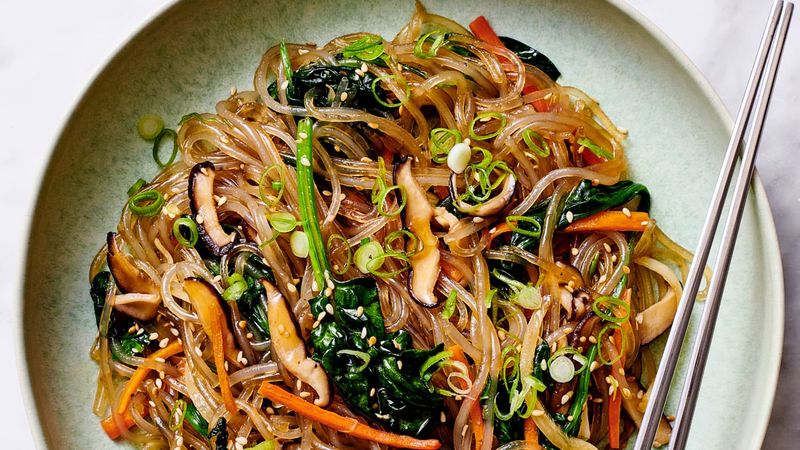
Japchae, a Korean dish made with glass noodles, offers a delightful mix of flavors and textures. Stir-fried with beef, vegetables, and sesame oil, it’s both savory and slightly sweet. Japchae is often served during festive occasions, symbolizing abundance and harmony. The dish’s translucent noodles, made from sweet potato starch, absorb the rich flavors, making each bite a culinary delight. With its vibrant colors and satisfying taste, japchae is a testament to Korea’s rich culinary heritage, loved by locals and visitors alike.
Hokkien Mee
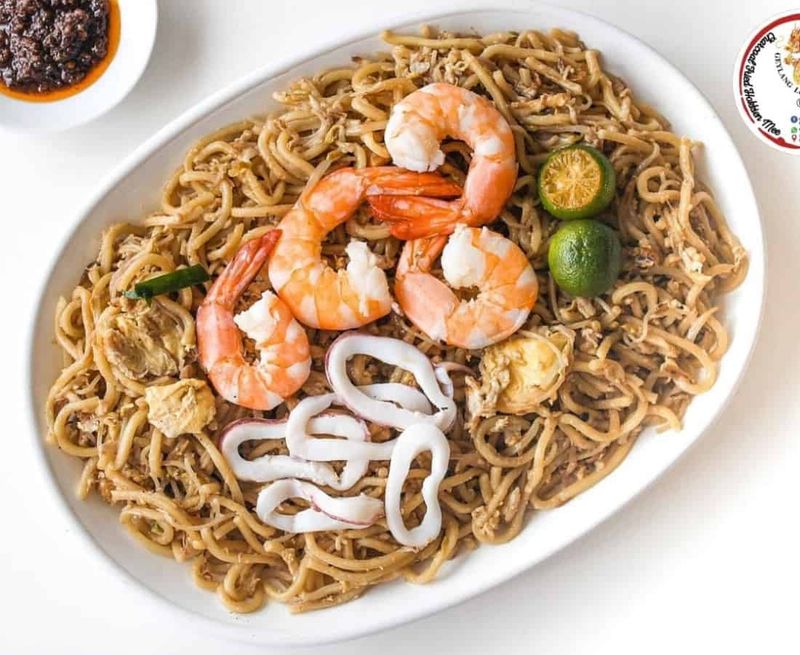
Hokkien Mee, a Singaporean specialty, is a savory noodle dish that combines egg noodles with prawns, squid, and rich broth. Often served with a side of sambal chili, it offers a delightful blend of flavors. The dish’s origins trace back to Hokkien immigrants, whose culinary traditions influence Singapore’s food scene. Enjoyed at bustling hawker centers, Hokkien Mee embodies the multicultural essence of Singaporean cuisine. Each mouthful is a taste of the island’s history, where diverse influences come together in perfect harmony.
Dan Dan Noodles
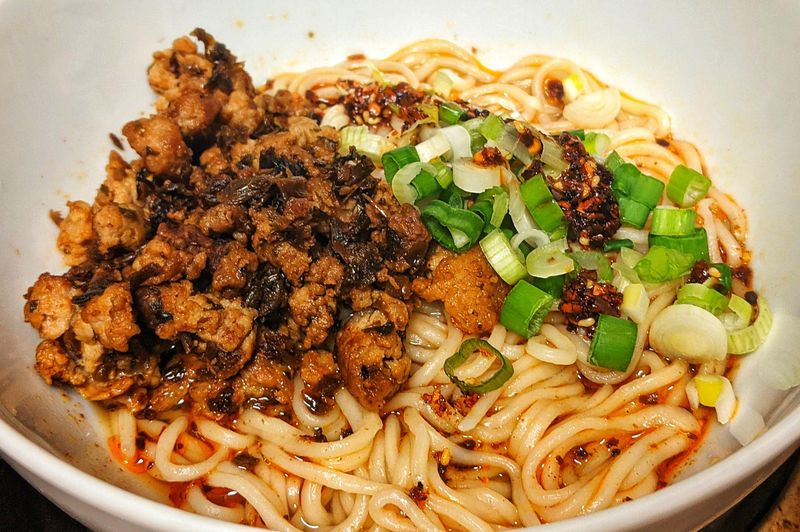
Dan Dan Noodles, a Sichuan classic, are known for their bold flavors and spicy kick. The dish features thin noodles topped with minced pork, chili oil, and Sichuan peppercorns, creating a tantalizing heat. Its origins as a street food reflect the rich culinary traditions of Sichuan Province. The name “Dan Dan” refers to the carrying pole used by vendors to sell the noodles. This dish captivates with its complex flavors, where the numbing spice of peppercorns meets the savory richness of the sauce, offering a taste of Sichuan’s vibrant food culture.
Pancit Canton
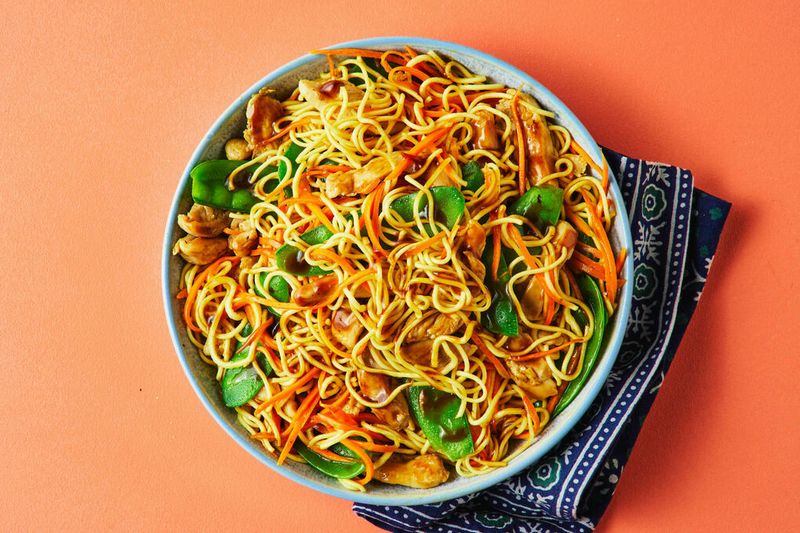
Pancit Canton, a staple in Filipino celebrations, is a dish of stir-fried egg noodles with chicken, vegetables, and a savory sauce. This dish is often prepared for birthdays and gatherings, symbolizing long life and prosperity. The vibrant colors and flavors of Pancit Canton reflect the Philippines’ diverse culinary influences. Each bite offers a taste of home and family, with the dish’s roots tracing back to Chinese immigrants who adapted their recipes to local tastes. It’s a culinary bridge between cultures, celebrated by Filipinos worldwide.
Yaki Udon
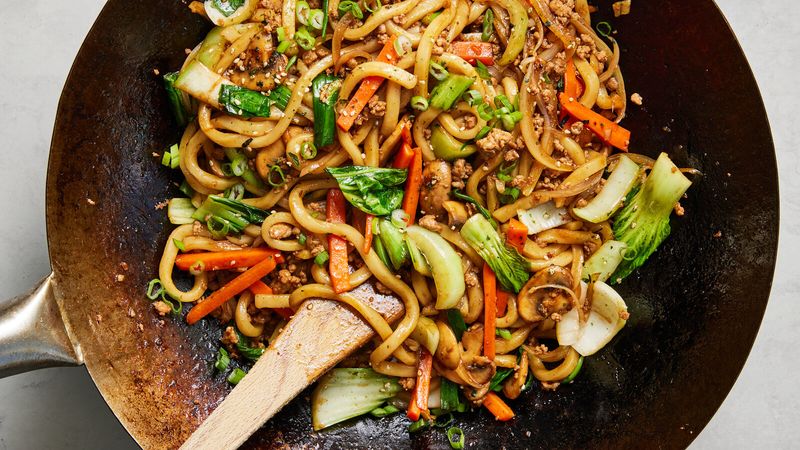
Yaki Udon, a Japanese stir-fried noodle dish, features thick udon noodles with savory flavors. Often cooked with beef or seafood and a variety of vegetables, it’s a satisfying meal enjoyed in casual settings like izakayas. The dish’s simplicity allows the flavors of soy sauce and dashi to shine, offering a comforting taste of Japan. Yaki Udon’s origins are linked to resourceful chefs using available ingredients during food shortages. Today, it remains a beloved dish, embodying the ingenuity and warmth of Japanese home cooking.
Khao Soi
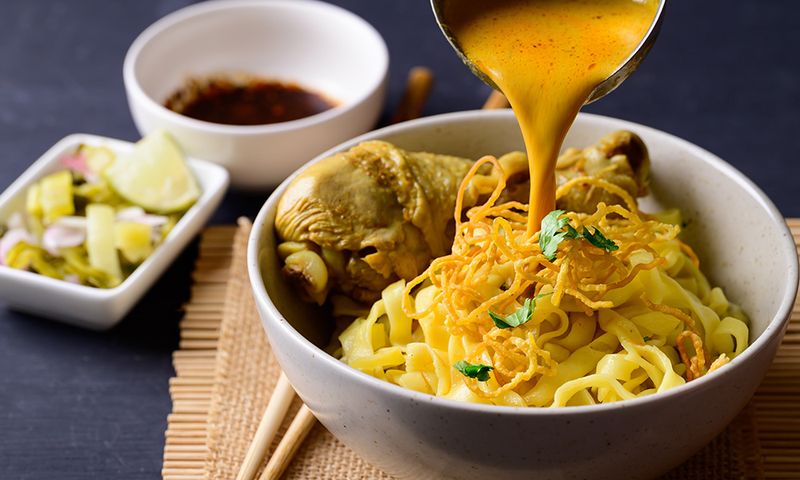
Khao Soi, a northern Thai specialty, combines creamy coconut curry broth with egg noodles, creating a dish of rich flavors and textures. Topped with chicken and garnished with pickled mustard greens and lime, it offers a delightful contrast of tastes. Khao Soi reflects the cultural blend of Thai and Burmese influences in the region, with each spoonful telling a story of tradition and innovation. This dish’s warm spices and unique ingredients make it a favorite among those seeking authentic Thai culinary experiences.
Pancit Malabon
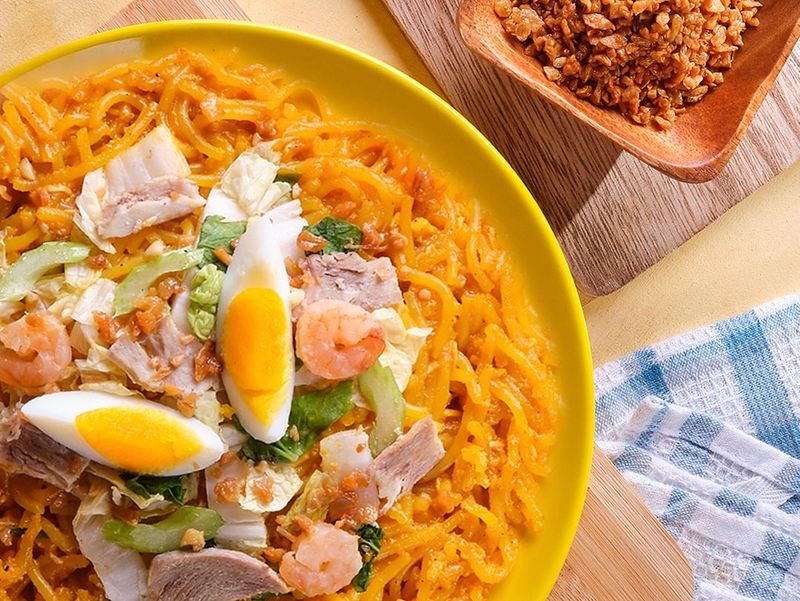
Pancit Malabon, named after the city of Malabon in the Philippines, is a seafood-rich noodle dish known for its vibrant flavors. Thick rice noodles are tossed with shrimp, squid, and salted egg, all coated in a savory sauce. The dish is often garnished with chicharrón and green onions, adding texture and color. Celebrated during festive occasions, Pancit Malabon is a symbol of Filipino hospitality and culinary creativity. Its unique blend of flavors captures the essence of coastal life, making it a beloved treat for locals and visitors alike.
Kway Teow
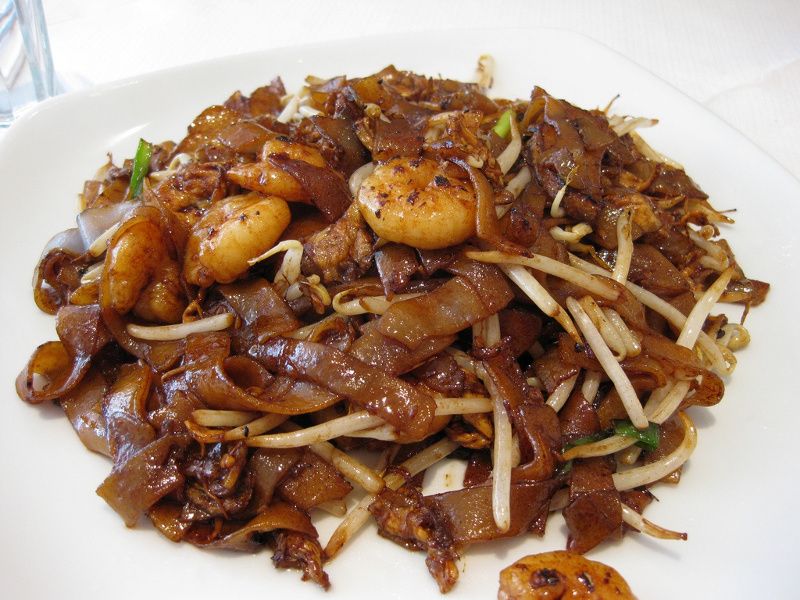
Kway Teow, a popular noodle dish in Southeast Asia, features flat rice noodles stir-fried with beef, vegetables, and soy sauce. Known for its rich flavors and satisfying texture, Kway Teow is enjoyed in various forms across Malaysia and Singapore. The dish’s origins are rooted in Chinese immigrant communities, whose culinary traditions have left a lasting impact on regional cuisines. Each serving of Kway Teow is a taste of the vibrant food culture in Southeast Asia, where diverse influences blend seamlessly to create mouthwatering dishes.
Tsukemen
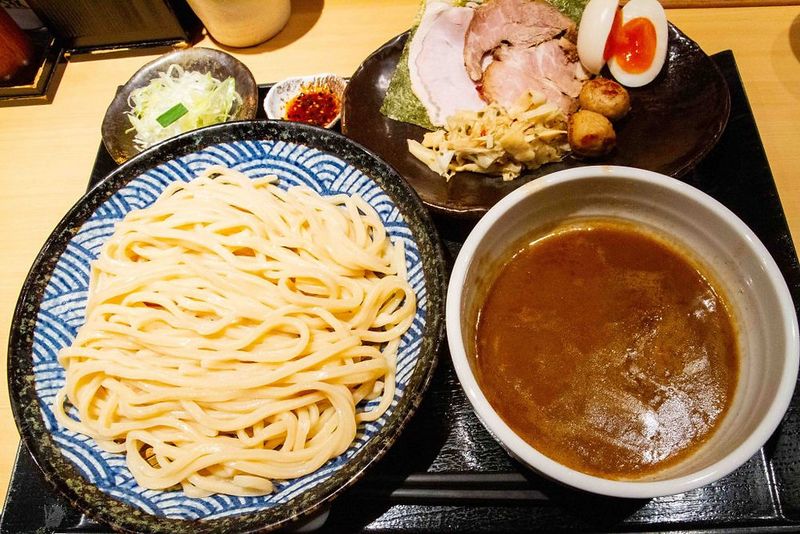
Tsukemen, a unique take on Japanese noodles, is served with thick noodles and a separate dipping broth. This innovative dish allows diners to savor the rich flavors of the broth while enjoying the noodles’ chewy texture. Often accompanied by toppings like chashu and nori, Tsukemen offers a fresh perspective on traditional ramen. Originating in Tokyo, this dish has gained popularity for its interactive dining experience. Tsukemen embodies the creativity and adaptability of Japanese cuisine, where tradition meets modern culinary trends.
Fried Bee Hoon
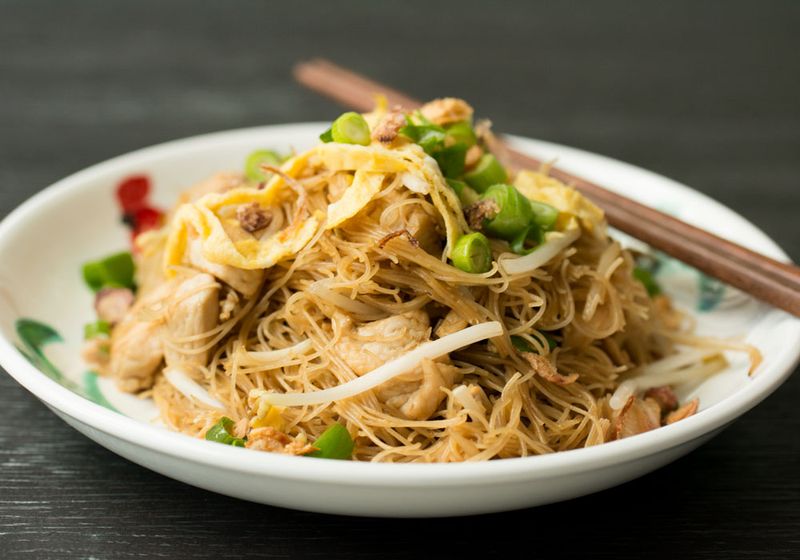
Fried Bee Hoon, a beloved dish in Singapore, features stir-fried rice vermicelli with vegetables and meat, such as chicken or shrimp. Often enjoyed for breakfast, this dish offers a light yet flavorful start to the day. The simplicity of Fried Bee Hoon belies its rich taste, where the noodles absorb the flavors of soy sauce and garlic. With roots in Chinese cuisine, it reflects Singapore’s multicultural food scene. Each serving is a reminder of the city’s vibrant culinary tapestry, where diverse tastes come together in harmony.
Mie Goreng
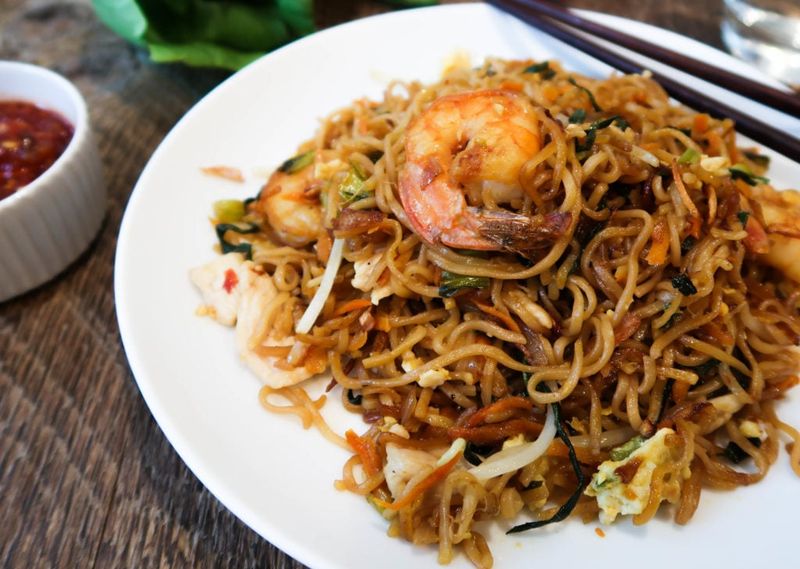
Mie Goreng, an Indonesian staple, translates to “fried noodles” and is a dish rich in flavor and texture. Fried with chicken, vegetables, and a sweet soy sauce, it offers a satisfying meal that reflects Indonesia’s diverse culinary heritage. Street vendors and home cooks alike prepare Mie Goreng, making it a popular choice for family gatherings and casual meals. The dish’s adaptability and vibrant taste make it a beloved favorite, capturing the essence of Indonesian culture and hospitality in every bite.
Lo Mein
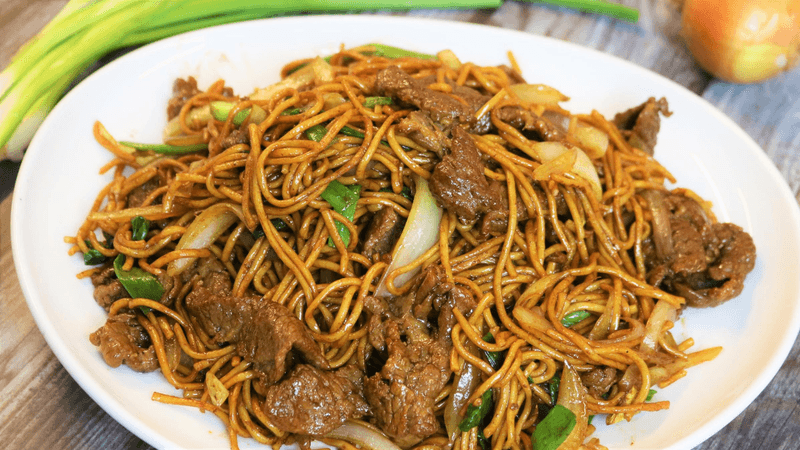
Lo Mein, a staple of Chinese cuisine, features soft egg noodles tossed with vegetables and meat, such as beef or shrimp. This dish is celebrated for its simplicity and rich flavors, often enjoyed in family gatherings and festive occasions. The name “Lo Mein” means “tossed noodles,” reflecting the dish’s preparation method. With a variety of sauce options, from savory to spicy, Lo Mein is versatile and satisfying. It’s a culinary canvas where chefs can express their creativity, making it a timeless favorite in Chinese dining.
Miso Udon
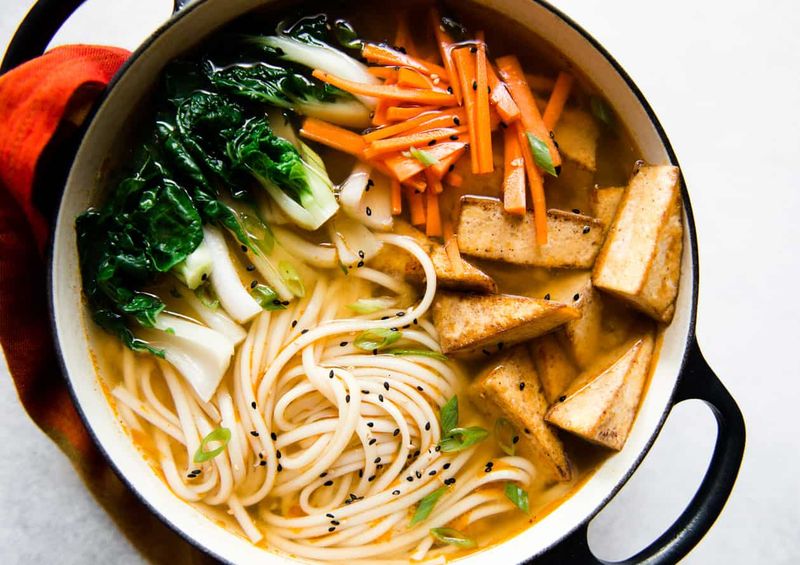
Miso Udon, a Japanese comfort food, combines thick udon noodles with a savory miso broth. This dish is often enriched with tofu, vegetables, and green onions, offering a warm and nourishing meal. Miso, a staple ingredient in Japanese cooking, adds depth and umami to the broth. The dish’s simplicity and rich flavors make it a favorite during colder months, providing comfort and warmth. Miso Udon is a testament to the art of Japanese home cooking, where humble ingredients are transformed into a satisfying culinary experience.
Biang Biang Noodles
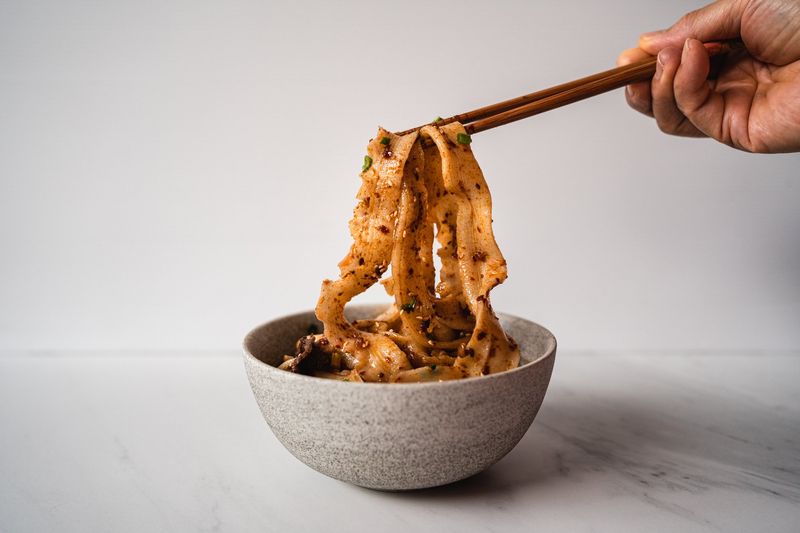
Biang Biang Noodles, a specialty from Shaanxi, China, are known for their wide, hand-pulled noodles and bold flavors. The dish is often served with chili oil, garlic, and various toppings, creating a spicy and aromatic experience. Its name is derived from the sound of the noodles being slapped against the counter during preparation. This traditional dish reflects the rustic charm of Shaanxi cuisine, where simple ingredients are elevated through skillful preparation. Biang Biang Noodles offer a taste of Chinese culinary history, celebrated for their hearty and robust flavors.
Leave a comment